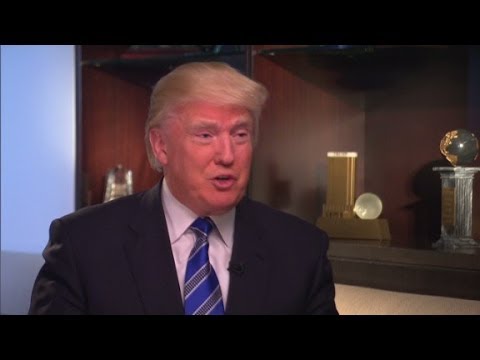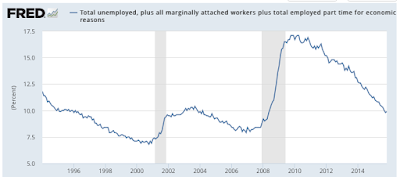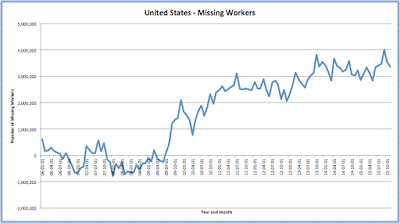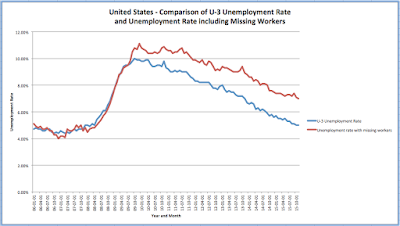
Let's open this posting with Donald Trump on unemployment from 2013, prior to his run for President:
While Trump's recent claim that unemployment was as high as42 percent is technically correct according to the employment-to-population ratio as shown here:
…he does fail to mention that many of the roughly 102 million Americans that aren't currently working have several reasons for not working including retirement, raising children and attending college (among others). However, as we will see in this posting, there is one other significant reason why millions of Americans are out of work and not counted among the officially unemployed.
As I've posted before, the real unemployment rate is far worse that the monthly U-3 headline unemployment rate that is publicized by the Bureau of Labor Statistics. In fact, looking at the U-6 rate which includes the U-3 unemployed plus all marginally attached workers plus all workers that are employed part-time for economic reasons, this is what we see:
At 9.9 percent, the current U-6 rate is down from just over 17 percent back in 2010 but is still roughly the same as it was during at its peak in 2003 just two years after the 2001 recession. As well, we have to keep in mind that we are now six and a half years into the post-Great Recession recovery.
While I haven't looked at the Economic Policy Institute'sanalysis of America's intransigent unemployment issues since the end of the Great Recession, I thought that it was time to take a look at the "real unemployment rate", that is, the rate if all "missing workers" are included. Missing workers are defined as "potential workers who, because of weak job opportunities, are neither employed nor actively seeking a job". These Americans have simply given up looking for a job, thus, they are not considered as "unemployed" by the Bureau of Labor Statistics since, according to their definition of unemployed, a person must be actively looking for work.
In the Economic Policy Institute's latest analysis, they show that in October 2015, there were 3.375 million missing workers. Here is a graph showing how the number of missing workers has not declined at all since the end of the Great Recession:
The number of missing workers has ranged between 2.6 million and 4.0 million since February 2013 and has been in excess of 3.3 million since June 2015.
If the missing workers were included in the official BLS unemployment data, this is what the "real unemployment" number would look like as compared to the headline U-3 rate:
The U-3 unemployment rate of 5.0 percent in November 2015 rises to 7.0 percent if missing workers are included.
Who are these missing workers? According to EPI, they range widely in age as follows:
– under 25 years old – 300,000 missing workers
– between 25 and 34 years old – 160,000 missing workers
– between 45 and 54 years old – 1,010,000 missing workers
– between 55 and 64 years old – 1,510,000 missing workers
– between 65 and 74 years old – 460,000 missing workers
It is rather disturbing to see that there are over 1 million missing workers between the ages of 45 and 54 who should be in their best earning years that have been sidelined by the long-term impact of the Great Recession.
As you can imagine, if the Bureau of Labor Statistics included the missing workers plus the marginally attached workers plus all workers that are employed part-time for economic reasons, the real unemployment rate would be far higher than the U-6 rate of 9.9 percent. In fact, according to John William's Shadow Government Statistics, the Shadow Stats alternate unemployment rate for November 2015 was a whopping 22.9 percent, a level that has remained more-or-less consistent since 2012. This is the sort of unemployment numbers that appeared during the Great Depression in the 1930s!
Until the economy is capable of creating strong work opportunities for millions of America's missing workers, the real American unemployment rate will be significantly higher than what the Bureau of Labor Statistics, the Federal Reserve and the mainstream media would have us believe. In any case, while Donald Trump's numbers were a bit skewed, millions of Americans will be looking to the next President of the United States to end their long-term unemployment misery.
Click HERE to read more of Glen Asher's columns
You can publish this article on your website as long as you provide a link back to this page.





Be the first to comment